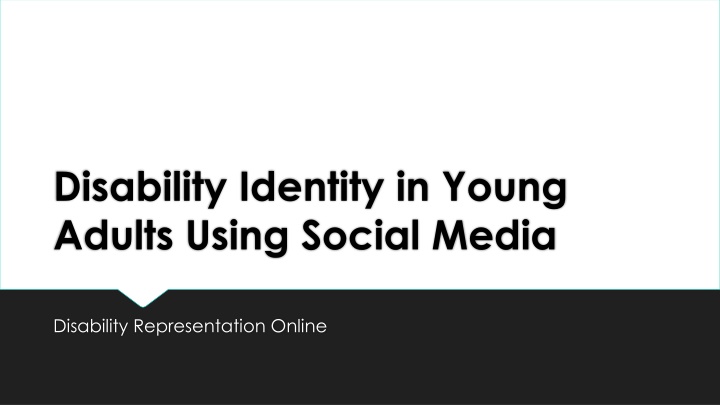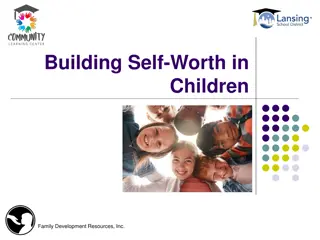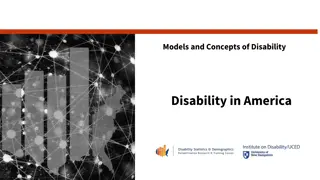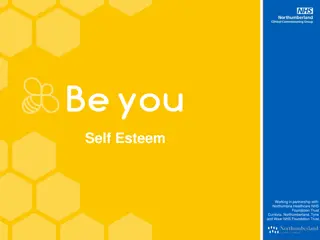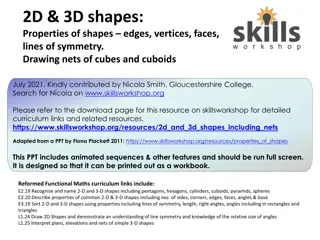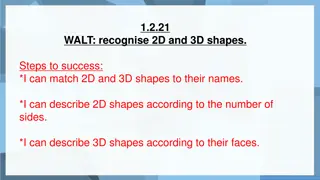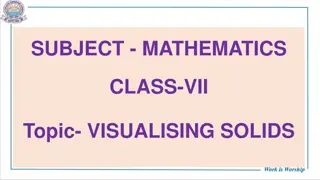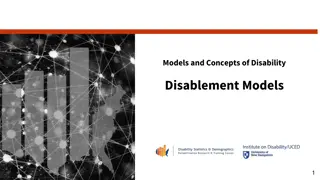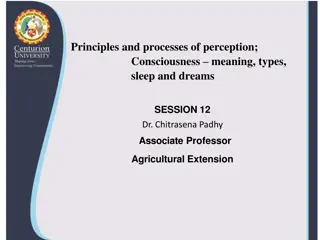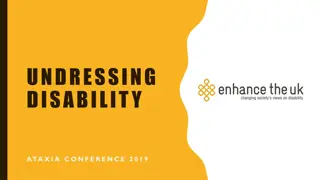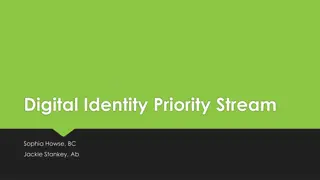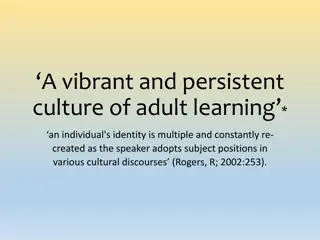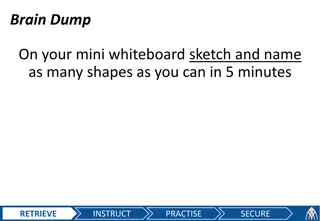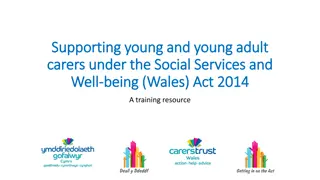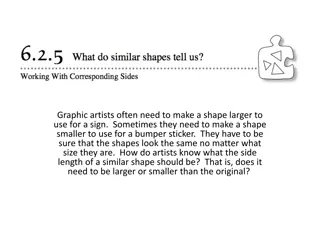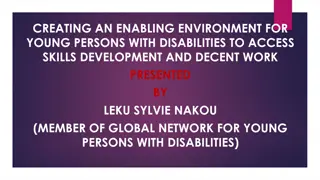Young Adult Disability Identity Online: How Internet Shapes Self-Perception
The intersection of youth, disability identity, and social media explored through crucial elements like self-worth, pride, and discrimination. Understanding ableism in online representations. Social responsibility on social media regarding empowerment and cyberbullying.
Download Presentation

Please find below an Image/Link to download the presentation.
The content on the website is provided AS IS for your information and personal use only. It may not be sold, licensed, or shared on other websites without obtaining consent from the author.If you encounter any issues during the download, it is possible that the publisher has removed the file from their server.
You are allowed to download the files provided on this website for personal or commercial use, subject to the condition that they are used lawfully. All files are the property of their respective owners.
The content on the website is provided AS IS for your information and personal use only. It may not be sold, licensed, or shared on other websites without obtaining consent from the author.
E N D
Presentation Transcript
Disability Identity in Young Adults Using Social Media Disability Representation Online
How The Internet Affects Identity Politics Protectionism : Teaching children how to interpret and read media messages (Gibbons, p. 257, 2012). Empowerment : The belief that children are resilient and active when they interact with and consume media (Gibbons, p. 257, 2012). The Outer-Self: The way society subjectifies an individual. The Inner-Self: How one views their place within society (Zemmels, p. 5-6, 2012). Young people are more fully wired, so their identity politics are intertwined technology (Zemmels, p. 5, 2012). A new definition of identity is being formed as a result of this co-dependent and/or reciprocal relationship.
Crucial Identity Elements Self-Worth: Valuing oneself; dependent on one s ability to perform activities or tasks viewed as important to the self, others, or society. Self-worth provides resistance to negative attitudes and stigma (Dunn and Burcaw, p. 150, 2013). Pride: Knowing one s self-worth, but embracing one s identity and/or disability as undervalued but crucial to society. Pride helps form solidarity and encourages feelings of belonging in an otherwise discriminatory setting (Dunn and Burcaw, p.150, 2013). Discrimination: Self-awareness and recognition of being targeted for bias and prejudice. Discrimination creates barriers that can disrupt daily life (Dunn and Burcaw, p. 150, 2013).
Social Responsibility: Some Definitions Ableism: A form of discrimination in favor of the able-boded/non-disabled, where there are inaccurate or stereotypical assumptions about ability status and normality/normalcy (Cloud, D., n.d.). The belief that individuals with disabilities need to be fixed. As a result, people with disabilities are not viewed as a cultural class (Smith, Foley, and Chaney, p. 305-306, 2008). Inspiration Porn: When able-bodied people find the ordinary daily activities of the disabled extraordinary. Figure I: Inspire Definition (inspire. (n.d.). Dictionary.com Unabridged.) Figure II: Porn Definition (porn. (n.d.). Dictionary.com Unabridged.) A subconscious reflection that disability or dysfunction makes a body or person lower in rank than the able-bodied.
Social Responsibility and Social Media The pattern of reciprocity present in identity is reflected in the way the Internet forms, and how we create trends. As a result, we need to form awareness of what content we share. The Internet may be a new public space for adolescents to work out their identities, but that adolescents have to be vigilant of cyber-bullying, decision-making, and overuse. Cyber-bullying includes sharing ableist, sexist, racist content. Young users are particularly vulnerable because the capacity to make good decisions and healthy judgments is not fully developed until after the college years, (Barth, p. 206, 2015).
Social Responsibility: Students and Faculty Ways Schools Can Provide Safe Internet Culture Educate about Internet effects, bullying, and other negative influences. Encourage solidarity, kindness, and empathy. Be socially active! Engage student concerns on Twitter and Facebook pages. Update Code of Conduct rules to include statutes against Internet harm such as harassment, abuse, or threats. Educate faculty and staff on appropriate disability, race, gender, and sexuality conversations online and offline. Provide resources if students feel harm from K-12 or college level Internet harassment.
Social Responsibility: Advocacy Social media is not only for sharing our own content, it is also designed to enlighten us from the content others share. Good Internet practices embolden cross cultural awareness. Smith et al. explain that larger scale activism may be necessary to counteract structural and institutional ableism, (Smith, Foley, and Chaney, p. 306, 2008). Social media provides a forum for advocacy work and cultural awareness conversations. Website and technology accessibility is one method for breaking down these social barriers and correct stereotypes and misunderstandings (Smith, Foley, and Chaney, p. 306, 2008).
Disability Intersectionality Disability is more than accessibility. Disability is intersectional with economic status, class, race, and sexual orientation. It is a minority status that interplays and interacts with other facets of identity (Smith, Foley and Chaney, p. 305, 2008). The degree of accessibility, safety, and comfort of the social media environment are important factors in use and user disability disclosure. The web provides opportunity for expression, and in turn, redefines self-worth for a new generation. This can breakdown or reinforce stereotypes, silence or amplify voices. Safe environments encourage pride in one s culture, whereas aggressive environments discourage one s narrative.
Age of Users I wanted to explore the age difference among young adult users of social media. Of the 65 people who answered this question, the use of social media splits fairly evenly between young adults. Group1 (Ages 18-24 years old): 30 Users Group 2 (Ages 25-30 years old): 35 Users
Gender Representation So, how did gender get represented among participants? The breakdown is as follows: Male: 9 Female: 37 Other: 19
Social Media Site Use By Preference Of the 47 participants, Facebook was the leading social media site of choice at an astounding 87%, followed by Twitter in 2nd place at 45% and Tumblr in 3rd at 40%. Instagram came in at a close 4th place with 32%. Snapchat and other sites trailed behind with just under 13%.
Why is Site Preference Important? Preference shows where young adult users are engaged. Site tracking unveils accessibility limits in website formatting and programming. Websites like Facebook and Tumblr use a number of different coding elements to allow text, pictures, videos, etc. Instagram and Snapchat heavily rely on visual media. When participants were asked to share why they chose their favorites, a number claimed that the website s ease of use, accessibility, and supportive peer environment were key factors in their selections. The Internet should be the next frontier to implement the ADA, making it a requirement for all websites to be disability accessible and follow formatting guidelines.
References Barth, F. (2015). Social Media and Adolescent Development: Hazards, Pitfalls and Opportunities for Growth. Clinical Social Work Journal, 43(2), 201-208. doi: 10.1007/s10615-014-0501-6 Cloud, D. (n.d.). Ableism: Definition & Examples | Study.com. Retrieved March 28, 2016 from http://study.com/academy/lesson/ableism-definition-examples.html Dunn, D., & Burcaw, S. (2013). Disability identity: Exploring narrative accounts of disability. Rehabilitation Psychology, 58(2), 148-157. Gibbons, D. (2012). Developing an Ethics of Youth Media Production Using Media Literacy, Identity, & Modality. The National Association for Media Literacy Education s Journal of Media Literacy Education, 4(3), 256-265. Retrieved May 10, 2015, from EBSCOHost.
References, continued inspire. (n.d.). Dictionary.com Unabridged. Retrieved March 28, 2016 from Dictionary.com website http://www.dictionary.com/browse/inspire porn. (n.d.). Dictionary.com Unabridged. Retrieved March 28, 2016 from Dictionary.com website http://www.dictionary.com/browse/porn Smith, L., Foley, P., & Chaney, M. (2008). Addressing Classism, Ableism, and Heterosexism in Counselor Education. Journal of Counseling & Development, 86(3), 303-309. Retrieved December 20, 2015, from SocINDEX. Zemmels, D. (2012). Youth and New Media: Studying Identity and Meaning in an Evolving Media Environment. Communication Research Trends, 31(4), P4-22. Retrieved May 11, 2015, from EBSCOHost.
